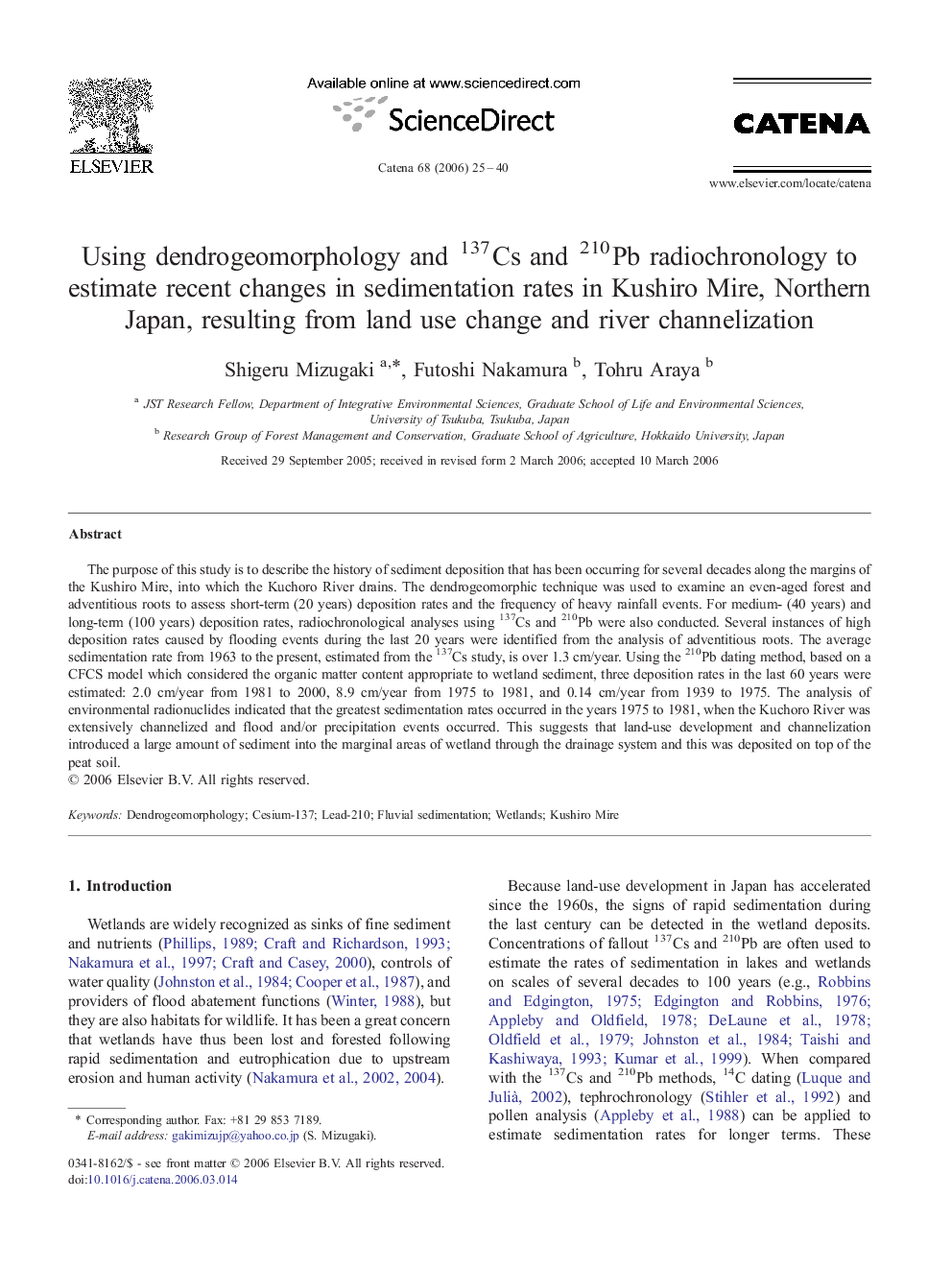| Article ID | Journal | Published Year | Pages | File Type |
|---|---|---|---|---|
| 4572768 | CATENA | 2006 | 16 Pages |
The purpose of this study is to describe the history of sediment deposition that has been occurring for several decades along the margins of the Kushiro Mire, into which the Kuchoro River drains. The dendrogeomorphic technique was used to examine an even-aged forest and adventitious roots to assess short-term (20 years) deposition rates and the frequency of heavy rainfall events. For medium- (40 years) and long-term (100 years) deposition rates, radiochronological analyses using 137Cs and 210Pb were also conducted. Several instances of high deposition rates caused by flooding events during the last 20 years were identified from the analysis of adventitious roots. The average sedimentation rate from 1963 to the present, estimated from the 137Cs study, is over 1.3 cm/year. Using the 210Pb dating method, based on a CFCS model which considered the organic matter content appropriate to wetland sediment, three deposition rates in the last 60 years were estimated: 2.0 cm/year from 1981 to 2000, 8.9 cm/year from 1975 to 1981, and 0.14 cm/year from 1939 to 1975. The analysis of environmental radionuclides indicated that the greatest sedimentation rates occurred in the years 1975 to 1981, when the Kuchoro River was extensively channelized and flood and/or precipitation events occurred. This suggests that land-use development and channelization introduced a large amount of sediment into the marginal areas of wetland through the drainage system and this was deposited on top of the peat soil.
